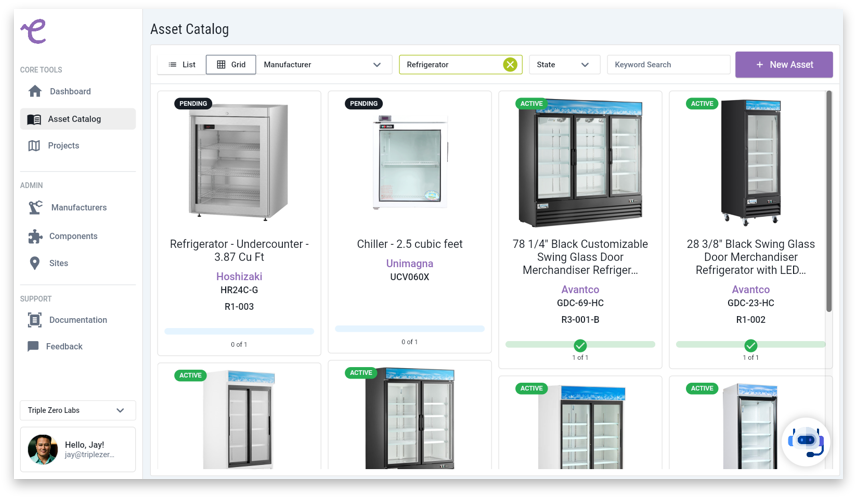Artificial intelligence might seem like magic, but even magic needs rules. One of the biggest misconceptions about AI is that it always gets things right. In reality, AI is only as useful as the data it works with. And when you’re managing complex asset catalogs across thousands of projects, bad data can snowball into real-world delays, rework, and costly mistakes.
At Ephany, we’re focused on managing the kind of data most project teams overlook: fixtures, furniture, and equipment (FF&E). These assets may seem small, but when you’re working across hundreds or thousands of locations, tracking the right assets (with the right options and finishes) is a massive job. This is where our agentic AI steps in… Not just to automate data extraction, but to double-check its own work.
Garbage In, Headaches Out: The Real Cost of Bad Asset Data

Imagine you’re rolling out a new store design, and the same refrigerator model is listed three different ways in your system. One record is missing dimensions, another was typed in twice, and a third doesn’t list which finish is required. That might not seem like a big deal, but do you really want to wait until the wrong asset gets ordered, it shows up late, or your drawings don’t match what’s on site?
In a traditional workflow, someone on the project team would have to comb through spreadsheets or drawings to find these issues. It’s tedious, it’s slow, and it’s prone to human error.
Every day a new store or facility opening is delayed means lost income. Retail industry analyses estimate that major retailers lose about $1.1 million in sales per day for a delayed store opening. Even a small-format restaurant can lose roughly $7,000 in revenue per day it cannot open. These losses add up quickly, and they come on top of rising capital costs – construction costs themselves climb an estimated 5% for each month a project is postponed. (source)
Meet the AI That Calls Out the Mess Before It Spreads

Ephany uses agentic AI with autonomous agents that do more than just extract data. They actively validate it.
When a new asset is added to the catalog, or when data is pulled from PDFs, Revit models, or scanned documents, Ephany’s AI agents perform automated checks in real time.
They flag:
- Inconsistencies (e.g., mismatched descriptions, dimensions, or part numbers)
- Duplicates (multiple entries of the same asset under different IDs)
- Missing fields (required metadata like finishes, power requirements, or vendor details)
Instead of waiting for someone to catch these errors manually, the AI catches them before the asset is provided to the design team, purchased by the procurement team, or installed by the construction team.
Why It Matters
Validation checks might not sound exciting, but they’re the backbone of reliable asset management. They keep your data clean, your procurement teams confident, and your construction timelines intact. They also make your AI smarter over time. Every validation step helps train the system to get better at spotting what doesn’t belong.
Ephany is Leading the Way
While many platforms use AI as a buzzword, Ephany is building real-world solutions using agentic AI to improve asset data where it matters most. We believe automation should come with accountability—and that’s why our validation checks are built in from the start.
Your asset data should work as hard as you do. With Ephany, it finally can.






